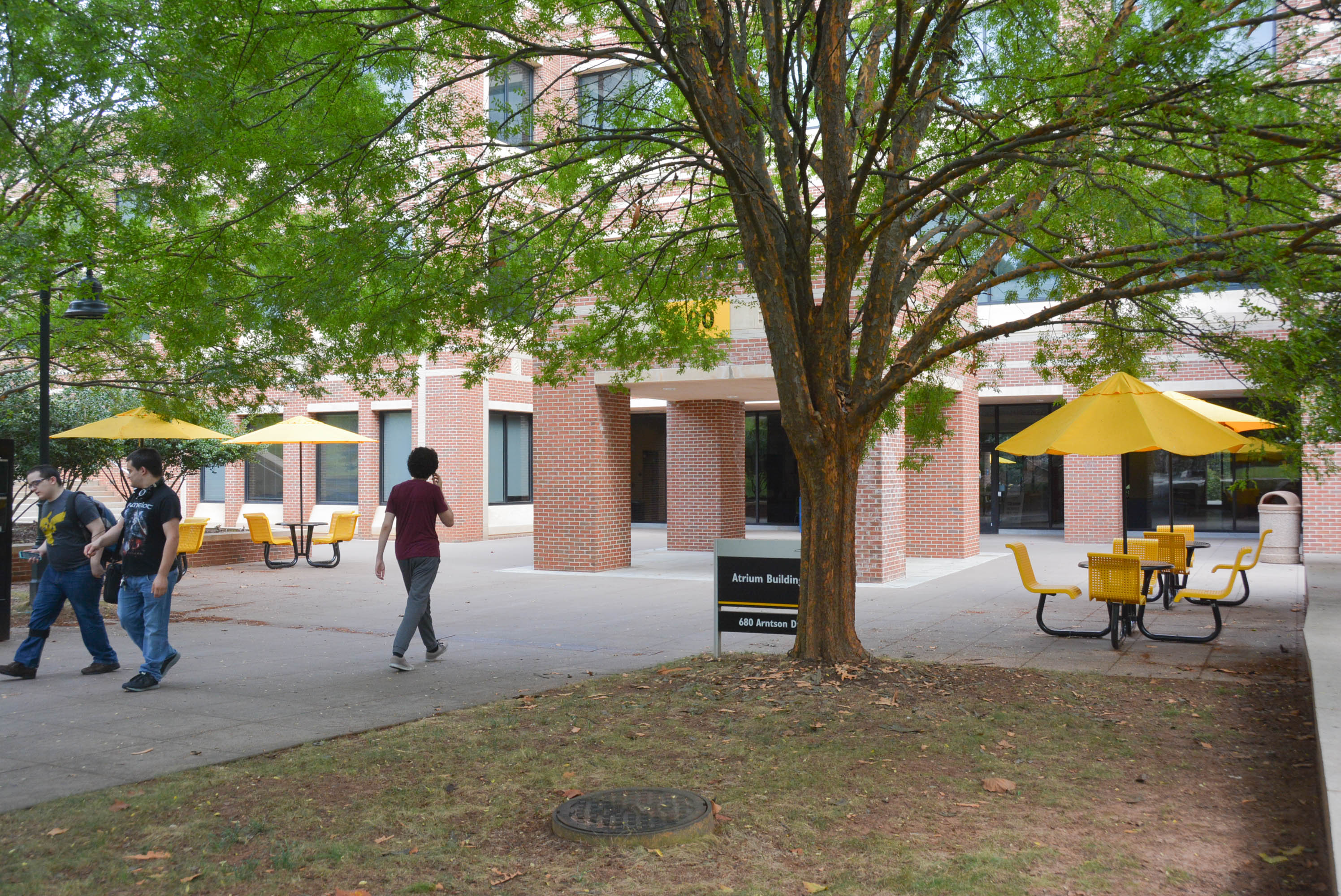A mindful drumming workshop hosted by Counseling and Psychological Services (CPS) in the Zuckerman Museum of Art taught students to relax their minds through the power of music.
The session lasted from 2-3 p.m. on Sept. 9 and was hosted by Greg Stevens, who serves as the associate director of clinical services for CPS.
The workshop started with Stevens introducing himself to the attendees and giving a brief history of the seminar. It was built on the basis of a therapy group he has run for the last seven years.
By combining his own musical experience and psychological education, Stevens has allowed the Mindful Drumming workshop to become a staple activity for CPS.
Stevens made a point to note how mindful drumming “[has] been used by cultures around the world for probably millennia at this point.” Denver Percussion noted that Native Americans, Ancient Greeks and those living in Africa and Mesopotamia all implemented this technique into their old practices.
The session went into detail about what makes drumming such an ideal activity to aid in meditation, with Stevens noting that this “low consequence activity” allows more room for participants to best find their own rhythm.
The workshop’s activities started in full with some meditative sitting: students drew attention to the rate and depth of their breathing, the ways in which their minds wandered, the sensations in their feet and honing in on what they considered to be their personal center before returning their attention to the room around them.
Once the participants revealed how they felt after this activity ended, the first drum circle began. Students picked various drums (mainly congas and tambourines) and shakers from a pile, feeling them out before beginning to play.
Stevens would start the rhythm and each member would build upon it, starting from his left side before looping back to him. After about nine minutes he nodded to the rightmost participant, letting them know to stop playing; the music gradually decreased until Stevens was the last member playing.
The participants told Stevens how they felt about the initial drum circle, particularly the effects it had on their bodies and minds. Stevens in turn said that the positive responses can be attributed largely to the students “being aware of how [they are] influencing each other,” altering how they played to fit more with everyone else.
Another drum circle was held after this, and the participant response was similarly positive.
In contrast, Stevens went on to make clear some of the common barriers to success people have while drumming. These include insecurity about the instruments they picked, not knowing how to join the drum circle, struggling to maintain a consistent pace, disagreements about how drumming should be done and not being able to discern all the different rhythms.
The Mindful Drumming workshop will be available as an ongoing therapy group later in the semester; more information about this can be found on CPS’ website.


